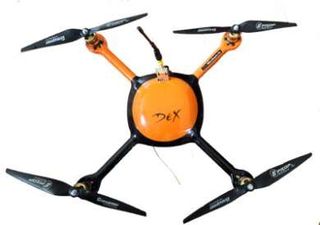https://youtube.com/watch?v=S72gB0pWiUc%C2%A0
Australians Bri Moreau and Chris Vogelzang are revolutionizing surf films one remote control helicopter at a time. In 2010, the duo created , a company that uses 19-inch, four-rotored helicopters to capture otherwise costly aerial footage of surf events. The team packs $5,000 worth of the latest camera and lens technology onto the frisbee-sized contraptions and sets them loose during events like the 2011 Rip Curl Pro. I caught up with Moreau to find out how many copters they've lost in the drink.
–Ali Taylor Lange
şÚÁĎłÔąĎÍř: How did this all start?
Moreau: About a year ago we took the camera over the ocean for the first time and made a two-minute clip that we posted to the web. No one had ever posted surf footage like that before. We got 140,000 hits and knew we had stumbled upon something pretty good.
What is a quadrocopter?
A quadrocopter has fewer moving parts than a conventional helicopter. It also has active stabilization that allows it to hover in one spot. A traditional helicopter doesn't do that. It tends to drift to a certain direction.

Just how stable is it? And how fast can it fly?
We can fly in winds up to 20 knots (23 mph). The footage will be affected a little, but you would be surprised at the amount of control the pilot has. We were filming $1.6 million motorboats yesterday and were traveling faster than them. We can probably clock about 60 mph if the machine is really moving.
What happens when it goes badly?
There is a lot of testing and with one little fault your machine goes down. And saltwater wrecks everything. It is a high stress environment.
How many have you lost in the ocean?
We have only had one go down in the ocean, and that was the first time we tested the waterproofing. But crashing is part of the experience of flying remote controlled helicopters and quadrocopters. It's inevitable. You will crash, and it will cost thousands of dollars. We have crashed plenty of times over the past 4 years, but have had around 10 serious ones, I would say. All the crafts have been salvageable post-crash, but they all needed new parts.
How are the crafts waterproofed?
Now we have an outfit that supplies us with waterproof frames, but before that we waterproofed it with a lettuce crisper (glorified Tupperware) and silicon gel.
What sports have you covered?
We have done a lot of surfing, some kayaking, sailing, mountain biking, motocross, and BMX.
Where do you see this going in the future?
Just talking from a conventional sports coverage perspective, it will revolutionize everything imaginable. If you think of snowboarding, just imagine having chopper-shots all the time, but this is even better than chopper-shots. It is tighter and closer in. From a filming perspective it will make everything much more cost effective. This is the future of extreme sports coverage.
You can see more or purchase your own craft at
Photo courtesy of Extreme Aerials